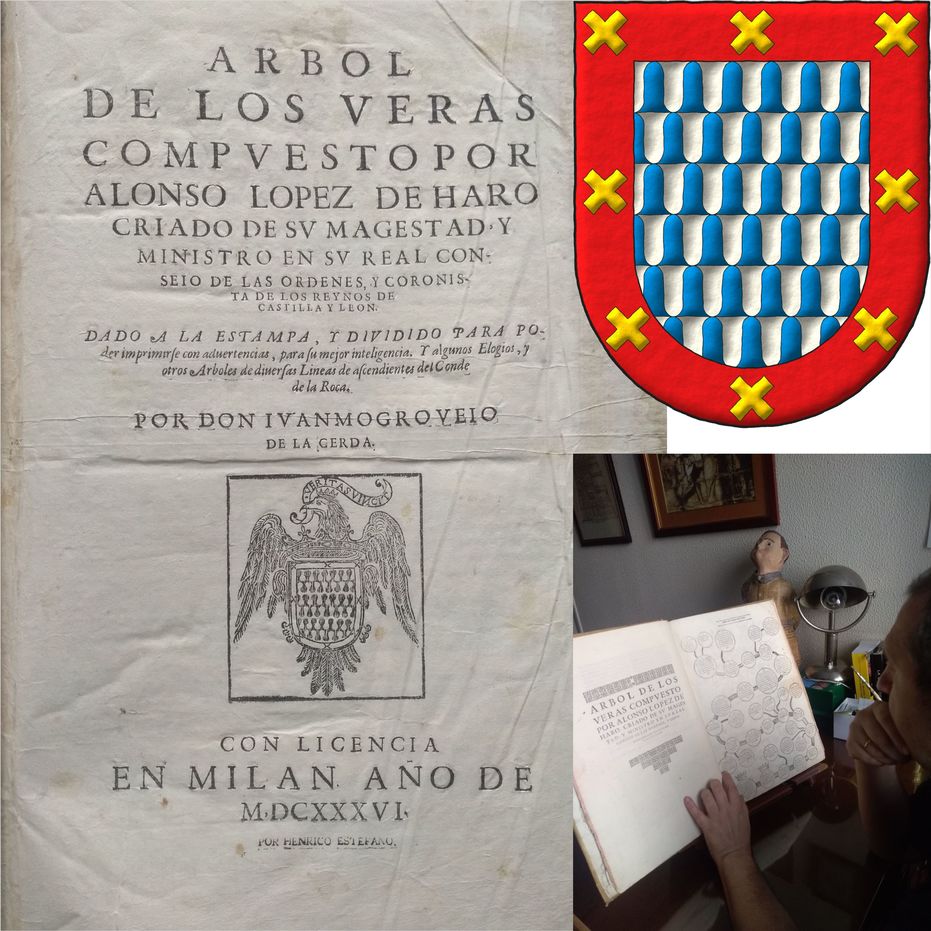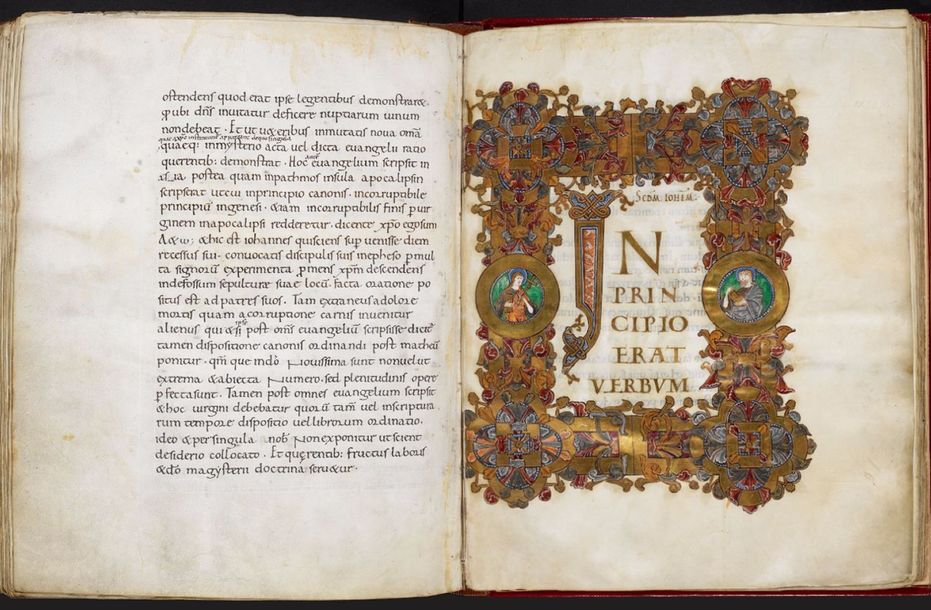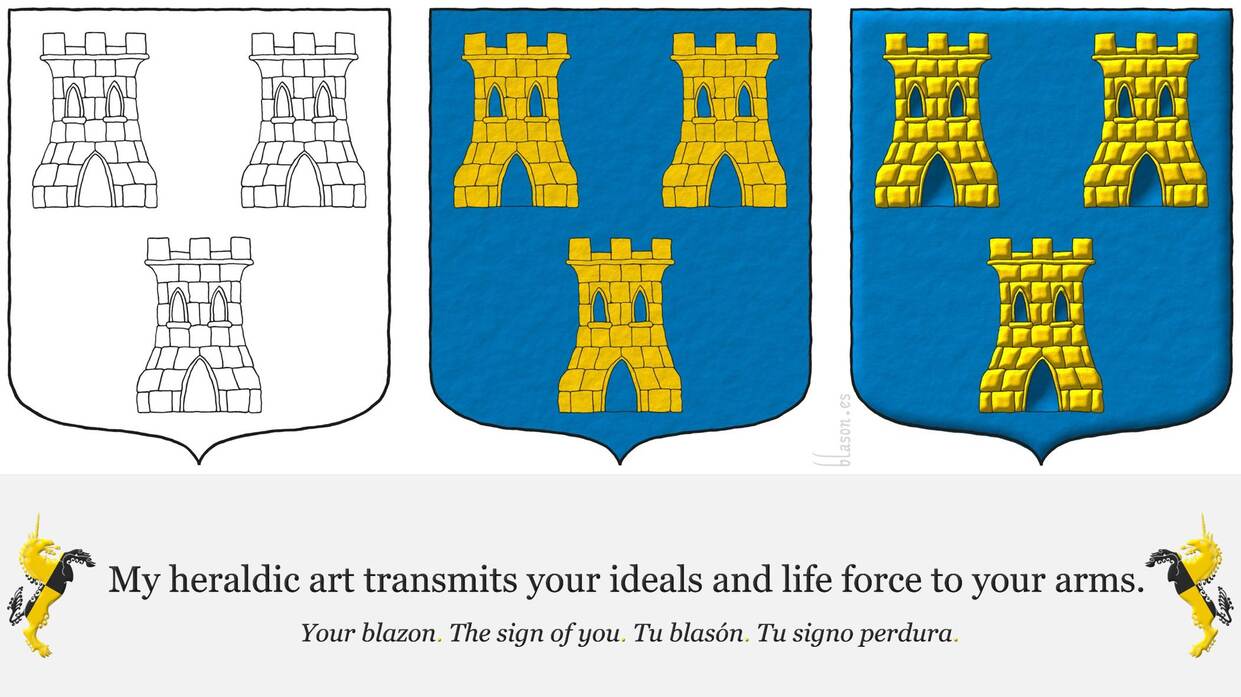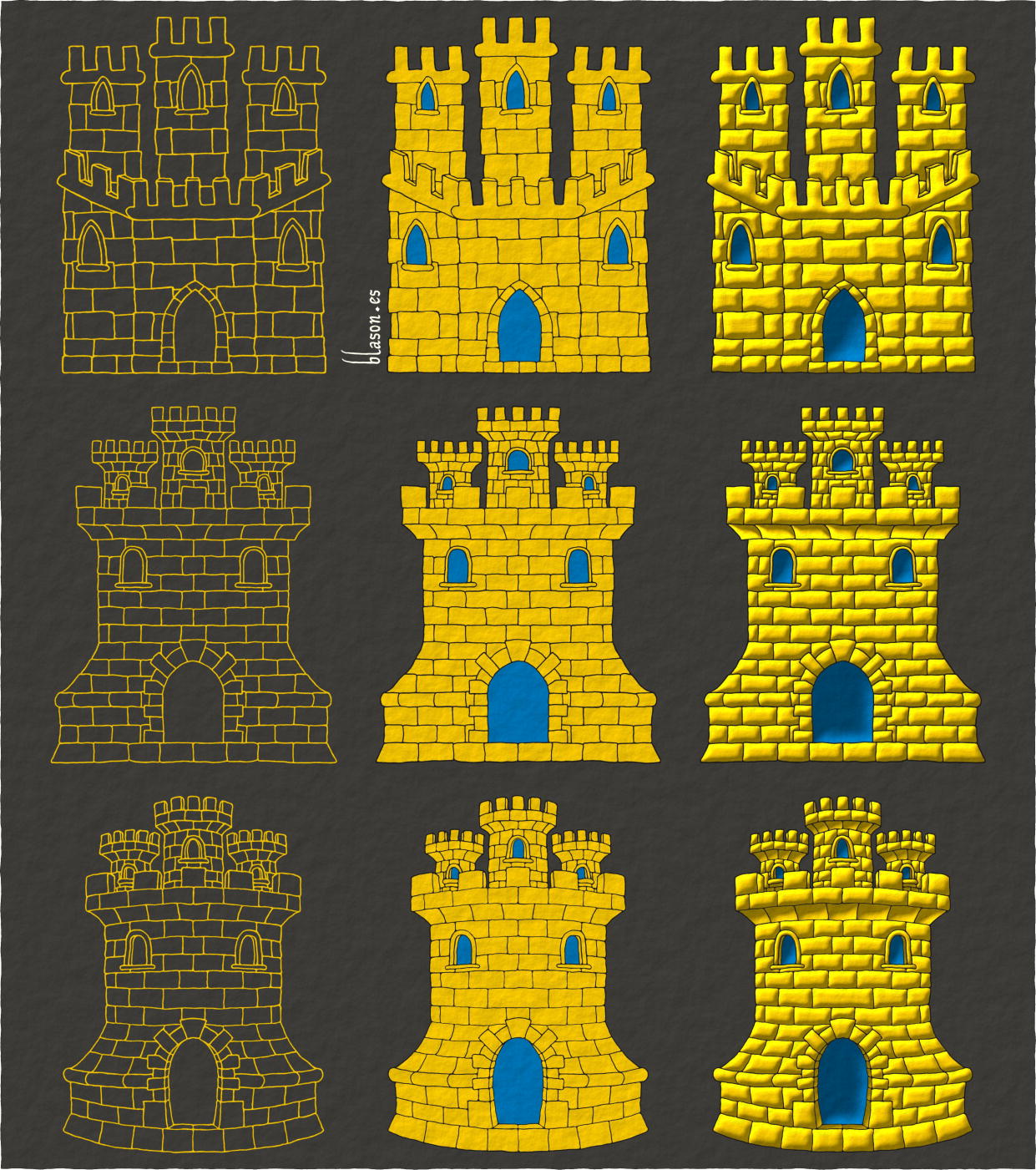
![Ver [Burke, J.; 1836] en referencias bibliográficas. Libro abierto, hojas de plata, filo de oro, guardas de gules, tapas de sable.](../css/Libro.Bibliografia.png)
Burke, J.; 1836
John Burke, «A Genealogical and Heraldic History of the Commoners of Great Britain and Ireland: Enjoying Territorial Possessions or High Official Rank; but Uninvested with Heritable Honours», 4 volumes, volume 1 with 726 printed pages, volume 2 with 740 printed pages, volume 3 with 738 printed pages, volume 4 with 805 printed pages, published for Henry Colburn by R. Bentley, Bell and Bradfute, in Edinburgh, and J. Gumming in Dublin, London, 1836.
Overview
This extensive work spans four volumes, 726 + 740 + 738 + 805 = 2309 pages, and provides a detailed account of the genealogy and heraldry of commoners in Great Britain and Ireland who held territorial possessions or high official ranks, yet were not vested with heritable honors.
Coats of arms and blazons
Each volume contains black and white illustrations of coats of arms, typically including the crest and wreath, with some also featuring supporters. The illustrations do not utilize hatching or tricking for tinctures, the tinctures must be seen in the text of the written blazons. For each lineage, the coat of arms is illustrated at the beginning, followed by a genealogical account, and the blazon is provided at the end. For example, for the Talbot lineage, in the volume 3, page 359-360, the blazon is written as follows: «Arms - Gu. a lion rampant, within a bordure engr. or. Crest - On a chapeau gu. turned up ermine, a lion statant or, the tail extended. Motto - Prest d'accomplir.» where «gu» is Gules and «or» is Or.
Bibliographical reference of century XIX.
Classification: Armorial roll, English language and In black and white.
The author is Burke, John.
The following article cites this bibliographic reference:
External resources:
Internal resources: BurkeJ1836.Commoners.Volume.01.pdf 758 pages in PDF format, BurkeJ1836.Commoners.Volume.02.pdf 772 pages in PDF format, BurkeJ1836.Commoners.Volume.03.pdf 762 pages in PDF format and BurkeJ1836.Commoners.Volume.04.pdf 838 pages in PDF format.


![Ver [Mogrovejo de la Cerda, J.; 1636] en referencias bibliográficas. Libro abierto, hojas de plata, filo de oro, guardas de gules, tapas de sable.](../css/Libro.Bibliografia.png)
Mogrovejo de la Cerda, J.; 1636
Juan Mogrovejo de la Cerda, «Árbol de los Veras compuesto por Alonso López de Haro, Criado de Su Majestad y Ministro de su Real Consejo de las Órdenes y Cronista de los Reinos de Castilla y León», bound in original parchment, Milan, 1636.
Contents
The book contains a total of 66 main genealogical trees, each with an average of 28 nodes/persons, totaling over 1700 nodes. Additionally, it includes 41 lines of descent with approximately 1150 individuals. The content is composed of:
- Title page with the coat of arms of the Veras.
- Errata and additions.
- Dedication.
- Warnings and introduction by Juan Mogrovejo de la Cerda, folios 1 to 4.
- Tree of the Veras, folios 6 to 66, with 61 genealogical trees.
- Eulogies of five Christian princes known for their virtue and valor, with trees of their descendants up to the Count of La Roca, folios 67 to 72.
- Linear trees of descent from Don Fernando Carlos Antonio de Vera, Doña María Antonia de Vera y Tovar, and Doña Catalina de Vera, folios 73 to 114, with 41 trees.
- Limitations of the work on folio 115.
- Indexes with handwritten corrections, folios 116 to 122.
- Additions to the edition, including a genealogical tree of Don Luis Francisco de la Cerda Sandobal y Rojas, Marqués de Alcalá.
- Additional handwritten documents attached but not bound.
In the previous image, The canting arms of Juan Antonio de Vera y Zúñiga, Count of La Roca, in this book about his genealogy, are canting because «vair~veros~Vera».
The motto in the beak of his sable eagle is «Veritas Vincit», although some authors claim that not all his trees honor this motto [Vera-Ortiz, J.A.; 2009].
The colored version of the coat of arms in this image was painted by me. Blazon: Vair ancient, a bordure gules charged with eight saltires couped Or.
Bibliographical reference of century XVII.
Classification: De bibliotheca, In black and white and Castilian language.
Author: Mogrovejo de la Cerda, Juan.
Bibliographic reference mentioned in the following articles:
External link:
Internal resources: Physical book..


![Ver [Cnut Gospels; 1020] en referencias bibliográficas. Libro abierto, hojas de plata, filo de oro, guardas de gules, tapas de sable.](../css/Libro.Bibliografia.png)
Cnut Gospels; 1020
Anonymous, «The Cnut Gospels», call number Royal MS 1 D IX, illuminated manuscript, Canterbury, circa 1020.
Contents and history
This manuscript, containing the Four Gospels, dates from the early 11th century. It is believed to have belonged to Christ Church, Canterbury, and may have been created there. It is named after Cnut, King of England, who reigned from 1016 to 1035, due to an added text in Old English that names Cnut and his brother Harold as brothers of the monastery.
Despite its royal associations, the manuscript only entered the Old Royal Library in the early 17th century, when Henry Frederick, Prince of Wales, acquired the library of John, 1st Baron Lumley.
Decoration and inscription details
The manuscript features full-page decorations at the beginning of each Gospel, with initials illuminated in gold, and lush stylized leaves in the borders, characteristic of late Anglo-Saxon decoration. For example, the border of the Gospel of Mark includes stylized leaves and embedded roundels of saints, and the incipit page for the Gospel of John is particularly notable for its decorated frame and gold initials.
Bibliographical reference of century XI.
Classification: Manuscript, English language and In color.
Author: unknown.
Bibliographical reference mentioned in the following article:


![Ver [Mayer, L. A.; 1933] en referencias bibliográficas. Libro abierto, hojas de plata, filo de oro, guardas de gules, tapas de sable.](../css/Libro.Bibliografia.png)
Mayer, L. A.; 1933
Leo Aryeh Mayer, «Saracenic Heraldry: A Survey», published by the University of Oxford at the Clarendon Press, Oxford, 1933.
The work provides a fully documented armorial roll of Saracenic sultans, princes, and knights, designed to meet the frequently expressed wish of students of Muslim archaeology. It is a fundamental reference work and remains as one of the most authoritative works on this subject.


![Ver [Stodart, R. R.; 1881] en referencias bibliográficas. Libro abierto, hojas de plata, filo de oro, guardas de gules, tapas de sable.](../css/Libro.Bibliografia.png)
Stodart, R. R.; 1881
Robert Riddle Stodart, «Scottish Arms: Being a Collection of Armorial Bearings, A.D. 1370-1678», Reproduced in facsimile from contemporary manuscripts with heraldic and genealogical notes, edited by William Paterson, Edinburgh, 1881.
This work is a comprehensive two-volume set that reproduces armorial bearings from various manuscripts dating from 1370 to 1678. The collection includes detailed heraldic and genealogical notes that accompany the facsimiles. It is an essential reference for anyone studying Scottish heraldry and genealogy.
Volume 1
Volume 1 contains an introduction, an alphabetical index of coats of arms, and 125 color plates, each displaying between 1 and 9 coats of arms per plate. This volume 1 is dedicated to the color illustrations of the coats of arms, while volume 2 consists entirely of text without illustrations. In volume 1, the Plates section with color illustrations of coats of arms follows the same structure as volume 2, as will be seen in the section dedicated to volume 2. The contents of volume 1 are as follows.
- Introduction.
- Index to the plates.
- List of names in the order in which they occur on the plates.
-
Plates:
- Armorial de Gelre, pages A to E.
- Armorial de Berry, pages I to II.
- Forman's Roll, pages 12 to 21.
- Sunderland Hall Ms., pages 22 to 24.
- Additions to Sir David Lindsay's Ms., pages 24^ to 34.
- Workman's Ms, pages 35 to 84.
- Kings' and Nobility's arms, pages 85 and 86.
- Sir David Lindsay the Youngers Ms, pages 87 to 94.
- Sir James Balfour's Ms, pages 95 and 96.
- Lyon register, pages 97 and 98.
- Earl of Crawford's Ms., pages 99 and 100.
- Gentlemen's arms, pages 101 to 106.
- Funeral escutcheons, pages 106 to 110.
- Sundries, pages 111 to 118.
- Heraldic and genealogical notes.
- Index to the notes.
- Additions and corrections.
Volume 2
Volume 2 continues the collection and includes further armorial bearings and notes and also references several historical armorials, with the following contents:
- I. The armorial de Gelre, circa 1369.
- II. The armorial de Gilles le Bouvier, Berry Roi d'Armes, circa 1450-55.
- III. Roll of arms, by sir Robert Forman, Lyon King of Arms, circa 1562.
- IV. Sunderland Hall manuscript.
- V. Additions to the booke and register of armes, compiled by sir David Lindsay, Lyon King of Arms.
- VI. Illuminated heraldic manuscript, called "Workman's," circa 1565-6.
- VII. Kings' and nobility's arms, circa 1566.
- VIII. Illuminated manuscript, circa 1603-5, ascribed to sir David Lindsay, Lyon King of Arms.
- IX. Armorial manuscripts by sir James Balfour, Baronet, Lyon King at Arms 1630-54, and another herald.
- X. The public register of all arms and bearings in Scotland, A.D. 1672-78.
- XI. Heraldic manuscript compiled during the reign of James VI, the property of the Earl of Crawford and Balcarres.
- XII. Gentlemen's arms collected during the reign of Charles I.
- XIII. Funeral escutcheons.
- XIV. Sundries.
Bibliographical reference of century XIX.
Classification: Armorial roll, English language and Black and white with color plates.
The author is Stodart, Robert Riddle.
External resources:
Internal resources: StodartR1881.ScottishArms.Heavy.Volume.01.pdf Heavy PDF, StodartR1881.ScottishArms.Heavy.Volume.02.pdf Heavy PDF, StodartR1881.ScottishArms.Light.Volume.01.pdf Light PDF and StodartR1881.ScottishArms.Light.Volume.02.pdf Light PDF.


Google Plus
I also had a heraldic wall in Google+ the social network created and closed by Google. Google + taught us that we should not put all our efforts into a single social network.
Categories: Technology, Social networks, Tower, Ordered, Or, Port and windows and Azure.


![Ver [Winkler, P. P. von; 1892] en referencias bibliográficas. Libro abierto, hojas de plata, filo de oro, guardas de gules, tapas de sable.](../css/Libro.Bibliografia.png)
Winkler, P. P. von; 1892
Pavel Pavlovich von Winkler, «Russian Heraldry: History and Description of Russian Coats of Arms with Illustrations of All the Coats of Arms of the Nobility, included in the General Armorial of the Russian Empire», printed by Typography and Lithography of I. A. Efron, Prachechny Passage, Building 6, 3 volumes, Volume 1, year 1892, 59 pages, 275 illustrations, includes a preface to the first volume, an index, basics of heraldry, and an armorial, Volume 2, year 1894, 71 pages, 302 illustrations, includes a preface to the second volume, an index, and an armorial, Volume 3, year 1894, 71 pages, 326 illustrations, includes a preface to the third volume, an index, and an armorial, St. Petersburg, 1892, 1894.
Description
This work by Pavel Pavlovich von Winkler is a comprehensive three-volume series on Russian heraldry, exploring the history and detailed descriptions of Russian coats of arms.
The first volume includes an introduction to heraldry, making it accessible to readers new to the subject. Each volume expands on specific aspects of Russian heraldry, providing an analysis and cataloging of various coats of arms throughout Russia's history.
Bibliographical reference of century XIX.
Classification: Armorial roll, Russian language and In black and white.
The author is Winkler, Pavel Pavlovich von.
Internal resources: WinklerPvon1892.Tomo.01 Pdf format, WinklerPvon1894.Tomo.02 Pdf format and WinklerPvon1894.Tomo.03 Pdf format.


Castilian castle
A Castle Or, triple towered, embattled, port and windows Azure, and masoned Sable.
Un castillo de oro, aclarado de azur, mazonado de sable.
Some of the characteristics of the Castilian castle are specified in the coat of arms in English, for example, «triple towered, embattled», but they are omitted in the Spanish blason, because the Spanish blason considered that the Castilian castle can not be otherwise. These local characteristics, that decades ago were not necessary to specify, could begin to have to be in this global and interconnected heraldic world. [Valero de Bernabé, L.; 2009a] describe the different characteristics between the Castilian, the French, and the English castles among others.
Blazon keywords: Castle, Or, Port and windows, Azure, Masoned and Sable.
Style keywords: Freehand.
Classification: Schema.

Continue with: Which one is the single blazon?.
-
Language
-
Categories of heraldry
-
Divisions of the field
- Without divisions
- Party per pale
- Party per fess
- Party per bend
- Party per bend sinister
- Tierce
- Tierce sinister
- Tierced per pale
- Tierced per fess
- Tierced per bend
- Tierced pallwise inverted
- Quarterly
- Quarterly per saltire
- Gyronny
- Party per fess, the chief per pale
- Party per pale, the sinister per fess
- Party per fess, the base per pale
- Party per pale, the dexter per fess
- Chapé
- Chaussé
- Embrassé
- Contre-embrassé
- Party per chevron
- Enté
- Enté en point
- Flanched
-
Metals
-
Colours
-
Furs
-
Other tinctures
-
Ordinaries and sub-ordinaries
-
Diminutives of the ordinaries
-
Other charges
-
Inanimate charges from Nature
Atom, Crescent, Diamond, Emerald, Estoile, Increscent, Lightning flash, Moon, Mount, Mullet, Mullet of four points, Orbital, Plough of Ursa Major, Rainbow, Ray of the sun, River, Sea, Snowflake, Sun, Sun in splendour, Sun of May, Trimount and Water.
-
Vegetal charges from Nature
Acorn, Apple, Apple tree, Ash, Bluebonnet, Camellia, Chrysanthemum, Cinquefoil, Cornflower, Dogwood flower, Double rose, Elm, Fleur de lis, Flower, Holm oak, Hop cone, Kapok tree, Laurel, Lily, Linden, Lotus flower, Madonna lily, Oak, Olive tree, Palm tree, Pomegranate, Poplar leaf, Rose, Shamrock, Sunflower, Thistle, Tree, Tulip, Vine and Wheat.
-
Animal charges from Nature
Badger, Bald eagle, Barbel, Barn owl, Bear, Beaver, Beetle, Bighorn sheep, Blackbird, Boar, Brach hound, Bull, Doe, Dog, Dolphin, Dove, Eagle, Elephant, Falcon, Fish, Flame, Fly, Fox, Frog, Goat, Goldfinch, Goose, Heron, Horse, Hummingbird, Jaguar, Lark, Leopard, Lion, Lion passant, Lion rampant guardant, Lioness, Lynx, Male figure, Martlet, Merino ram, Owl, Panther, Parrot, Peacock, Pelican, Pelican in her piety, Puffin, Quetzal, Raven, Roe deer, Rooster, Savage, Seagull, Serpent, She-wolf, Stag, Starling, Talbot, Tyger, Vulture, Warren hound and Wolf.
-
Parts of natural charges
Arm, Beak, Branch, Caboshed, Chest, Claw, Covert, Dorsal fin, Eagle claw, Ermine spot, Escallop, Feather, Foot (palmiped), Foreleg, Forepaw, Hand, Head, Heart, Hoof, Leaf, Neck, Ostrich feather, Palm frond, Paw, Roe deers' attires, Shoulder, Sprig, Stags' attires, Stem, Swallow-tail, Tail, Tail addorsed, Tail fin, Talon, Tooth, Trunk, Trunk (elephant), Two hands clasped, Two wings in vol, Udder, Wheat spike, Wing and Wrist.
-
Artificial charges
Ace of spades, Anchor, Anvil, Arch, Arm vambraced, Armillary sphere, Arrow, Axe, Bell, Bell tower, Beret, Bonfire, Book, Bookmark, Bow, Bridge, Broken, Buckle, Cannon, Cannon dismounted, Cannon port, Canopy roof, Carbuncle, Castle, Celtic Trinity knot, Chain, Chess rooks, Church, Clarion, Clay pot, Closed book, Club, Comb, Compass rose, Conductor's baton, Cord, Covered cup, Crozier, Crucible, Cuffed, Cup, Cyclamor, Dagger, Double vajra, Drum, Ecclesiastical cap, Fanon, Federschwert, Fleam, Four crescents joined millsailwise, Galician granary, Garb, Gauntlet, Geometric solid, Grenade, Halberd, Hammer, Harp, Host, Hourglass, Key, Key ward, Knight, Knot, Lantern, Letter, Line, Loincloth, Menorah, Millrind, Millstone, Millwheel, Monstrance, Mortar, Mullet of six points pierced, Nail, Non-classic artifact, Norman ship, Number, Oar, Oil lamp, Open book, Page, Pair of scales, Parchment, Pestle, Piano, Plough share, Polish winged hussar, Port, Portcullis, Potent, Quill, Ribbon, Rosette of acanthus leaves, Sabre, Sackbut, Sail, Scroll, Scythe, Sheaf of tobacco, Ship, Skirt, Spear, Spear's head, Stairway, Star of David, Step, Sword, Symbol, Tetrahedron, Torch, Tower, Trident, Trumpet, Turret, Two-handed sword, Wagon-wheel, Water-bouget, Wheel, Winnowing fan and With a turret.
-
Immaterial charges
Angel, Archangel, Basilisk, Dragon, Dragon's head, Garuda, Golden fleece, Griffin, Heart enflamed, Mermaid, Our Lady of Mercy, Ouroboros, Paschal lamb, Pegasus, Phoenix, Sacred Heart of Jesus, Saint George, Sea-griffin, Trinity, Triton, Unicorn, Winged hand and Wyvern.
-
External elements
-
Heraldic creations
-
References
-
Formats
-
Keywords on this page
Riddle, Port and windows, Pointed, Armorial roll, Azure, Bend, Bibliography, Bordure, Surmounted, Charged, Castle, Ogee, Party per fess, De bibliotheca, Outlined in sable, In black and white, Black and white with color plates, In color, Schema, Genealogy, Gifra, Vittorio, Google Plus, Gules, Castilian language, English language, Russian language, Arab language, Manuscript, Masoned, Semi-circular, Eight, Ordered, Or, Paly, Social networks, Rounded, Sable, Six, Century XI, Century XIX, Century XVII, Century XX, Vert, Overall (deprecated), Saltire, Technology, Tower, Freehand and Triangular curved.




